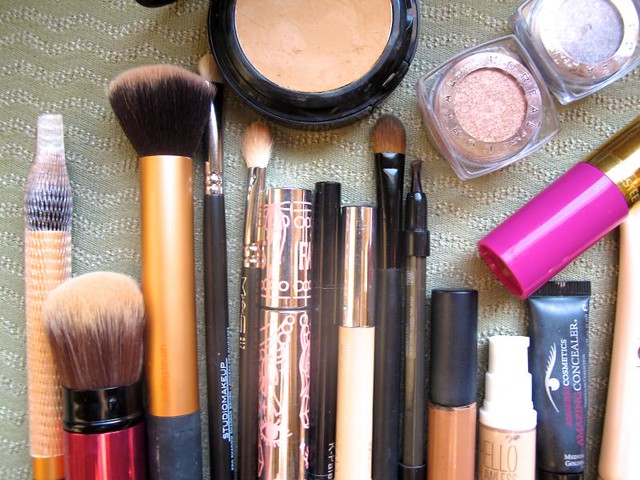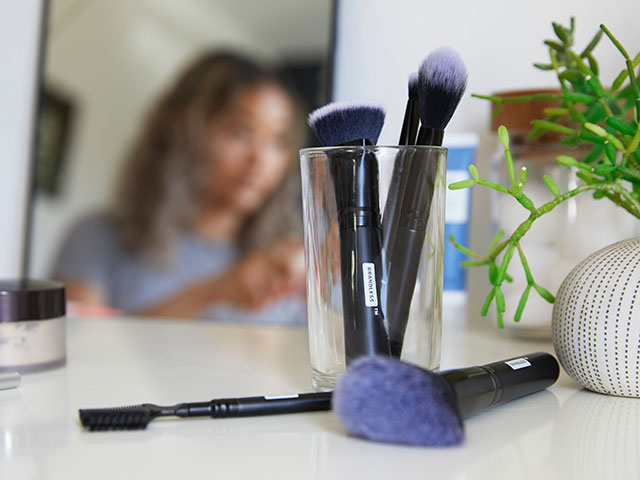Cosmetics have become an indispensable part of our daily lives. From moisturizers and foundation to lipstick and mascara, they help us enhance our natural beauty and express ourselves. But have you ever wondered what goes into the products you apply to your skin every day? What are the ingredients that make up your cosmetics, and should you be concerned about what you’re putting on your face? In this article, we’ll delve deep into the world of cosmetics, uncovering the mystery behind the ingredients and helping you make informed choices about the products you use.
The Basics: What Constitutes Your Cosmetics
Cosmetic products are a complex blend of various ingredients carefully curated to provide specific benefits. These ingredients can be broadly categorized into the following groups:
1. Emollients and Moisturizers
These ingredients are responsible for keeping your skin soft and hydrated. Common emollients include oils, butter, and fatty acids, which lock in moisture and prevent water loss from the skin. Look for ingredients like shea butter, glycerin, and hyaluronic acid on your product labels for excellent moisturizing effects.
2. Emulsifiers and Surfactants
Emulsifiers and surfactants help mix water and oil-based ingredients in your cosmetics. They ensure that the product maintains a stable consistency and spreads evenly on your skin. Common examples include cetearyl alcohol, lecithin, and sodium lauryl sulfate.
3. Preservatives
To prevent microbial growth and extend the shelf life of your cosmetics, preservatives are added. Parabens, phenoxyethanol, and potassium sorbate are frequently used to maintain product safety and quality.
4. Colorants and Pigments
These ingredients give your cosmetics their appealing colors. Iron oxides, titanium dioxide, and various dyes are used to create a wide range of shades in makeup products.
5. Fragrances and Essential Oils
Fragrances add a pleasant scent to cosmetics, making them more enjoyable to use. Essential oils like lavender, rose, and chamomile can provide a natural and aromatic touch.
6. Active Ingredients
Active ingredients are what make your cosmetics effective in achieving their intended purpose. For example, hyaluronic acid in anti-aging products helps to reduce wrinkles, while salicylic acid in acne treatments exfoliates the skin.

Ingredient Labels: Decoding the Jargon
When you pick up a cosmetic product, you’re often faced with an array of complicated chemical names on the ingredient label. Understanding these names can be a daunting task, but it’s crucial for making informed choices. Here are a few tips to decode the jargon:
- Water is often the first ingredient: Cosmetic products are primarily water-based, and you’ll find “water” listed as the first ingredient in many of them.
- The 1% rule: Ingredients are listed in descending order of concentration. So, if an ingredient is near the top of the list, it’s present in a higher concentration. Conversely, if an ingredient is near the bottom, it’s only present in trace amounts.
- Look for allergens: If you have sensitive skin or allergies, it’s essential to identify potential irritants. Common allergens include fragrances, preservatives, and certain essential oils.
Should You Be Concerned?
With the growing awareness of health and wellness, many people are becoming more mindful of the ingredients in their cosmetics. Here are a few reasons why you might want to pay attention:
Skin Sensitivity
Certain ingredients can irritate sensitive skin or exacerbate conditions like eczema or rosacea. Knowing what’s in your cosmetics can help you avoid products that may cause adverse reactions.
Allergies
If you have known allergies or sensitivities to specific ingredients, checking labels is crucial. You can sidestep products that might trigger allergic reactions.
Ethical and Environmental Considerations
Some consumers are concerned about the environmental impact of cosmetic ingredients. They opt for products that are cruelty-free, free of harmful chemicals, or sustainably sourced.
Customization
Understanding the ingredients in your cosmetics allows you to choose products that cater to your unique skincare needs. Whether you’re looking for anti-aging solutions, acne control, or hydrating formulas, a little ingredient knowledge can go a long way. If you found this article useful, you may also visit Subagon to read more about cosmetics.
Final Thoughts
Cosmetics are more than just pretty packaging and alluring advertisements. They are a complex blend of ingredients carefully formulated to provide benefits for your skin. By understanding what’s really in your cosmetics, you can make informed choices that cater to your skin’s unique needs. So, the next time you shop for your favorite lipstick or moisturizer, take a moment to decode the label and ensure that you’re getting exactly what you want.

